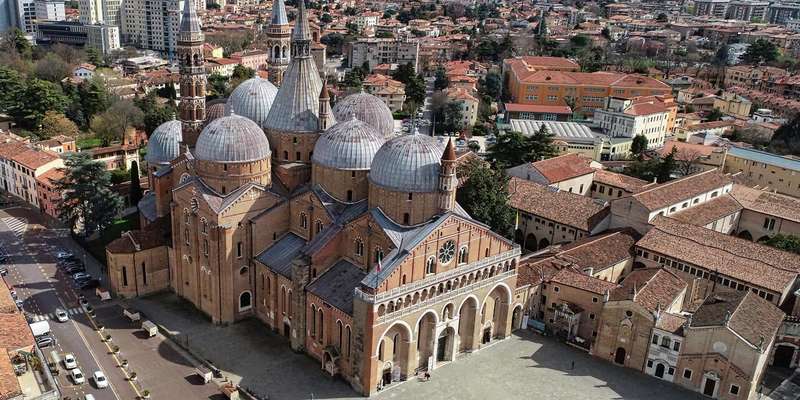- Home
- Useful Tips
- Essential sights in Padua for a...
With over 6 million visitors annually, Padua's compact historic center conceals artistic masterpieces and medieval charm behind its university-town facade. Yet most travelers make critical mistakes – wasting precious hours in ticket lines, missing timed-entry marvels, or overlooking authentic osterias favored by locals. The frustration mounts when you realize Padua's three crown jewels (the Scrovegni Chapel, Basilica of Saint Anthony, and Palazzo della Ragione) require strategic timing to appreciate fully. Add the pressure of limited visiting hours at lesser-known sites like the Anatomical Theater, and it's easy to leave feeling you've missed the essence of this UNESCO-listed city. Unlike Venice's obvious attractions, Padua rewards those who understand its rhythm – where morning light transforms Giotto's frescoes and student-filled piazzas buzz with aperitivo energy by late afternoon.


Prioritizing Padua's timed-entry treasures
The Scrovegni Chapel's reservation system catches many off guard – these 14th-century frescoes only admit 25 visitors every 15 minutes, with slots often selling out days ahead. Arrive 30 minutes before your assigned time at the adjacent Eremitani Museum to watch the mandatory climate-stabilization video. Meanwhile, the University of Padua's historic buildings operate on limited public hours; the 1594 Anatomical Theater (where Galileo once taught) opens just three afternoons weekly. Smart travelers book chapel tickets for 9 AM openings when colors glow brightest, then head straight to the university quarter where the Bo Palace courtyard's heraldic crests tell centuries of academic prestige. Leave afternoons flexible for the Basilica of Saint Anthony, where pilgrim crowds thin post-lunch and the Donatello bronzes in the choir shine under angled light.
Navigating Padua's walkable historic core
Padua's elliptical layout means major sites sit within a 15-minute radius, but cobblestone streets and porticoed sidewalks demand smart routing. Start at the sprawling Prato della Valle (Europe's second-largest square), where morning mist rises off the canal encircling Isola Memmia. From here, follow the student-thronged Via Roma past Renaissance palazzos to the market squares – Piazza delle Erbe and Piazza della Frutta frame the Palazzo della Ragione with its extraordinary wooden horse and astrological frescoed hall. Locals know to visit before noon when produce stalls create vibrant photo backdrops. For a strategic break, Caffè Pedrocchi's neoclassical rooms serve mint coffee (a 19th-century innovation) near the university district. The key is moving counterclockwise to end at the Basilica by dusk when the chapel of St. James' starry mosaic dome lights up.
Where Paduan students eat and drink
Tourists often overlook Padua's thriving aperitivo culture, crowding into overpriced trattorias near the basilica while locals flock to historic wine bars. Osteria L'Anfora maintains its 1930s charm with cicchetti (Venetian-style tapas) and €5 glasses of local Colli Euganei wines – arrive before 7 PM to snag marble barrels used as tables. For a quick lunch, Pasticceria Graziati near the university bakes rose-shaped pastries filled with custard since 1918. The secret? Order 'un roscoe e un ombra' (a pastry with a shot of wine) like academics do. Evening brings locals to Enoteca Il Tigli in the ghetto area, where organic Prosecco pairs with plates of sopressa salami. These spots require no reservations but do observe the Italian dining rhythm – kitchens close between 2:30-7 PM.
Combining Padua with nearby gems
Those with extra hours can leverage Padua's strategic location. The Brenta Riviera's villas (like Palladio's Villa Pisani) make an ideal half-day trip via Battaglia Terme's vintage riverboats – cheaper and less crowded than Venice options. Alternatively, the Euganean Hills' thermal towns (Abano Terme) offer €15 afternoon spa passes at historic establishments like Hotel Terme Milano. For art lovers, the seldom-visited Oratory of San Giorgio hides Pisanello's exquisite fresco cycle just 12 minutes by tram from Padua center. These excursions work best when booked through local agencies offering combined transport tickets, especially for the villas where public transit connections are infrequent. Padua's train station also provides direct 25-minute rides to Vicenza for Palladio architecture without Venice's crowds.



